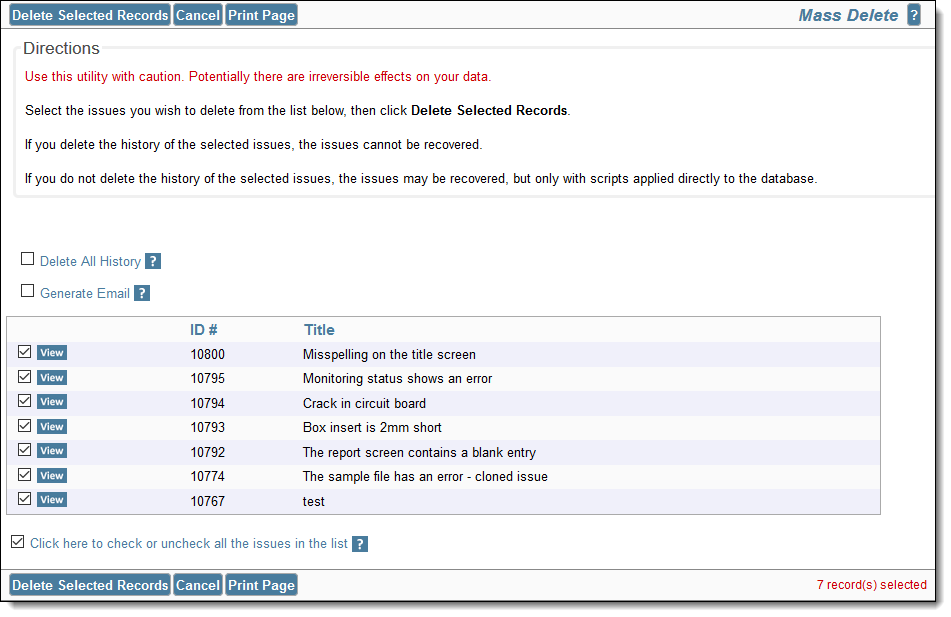Mass Deleting of Issues
Extreme caution should be used with this utility. Only user roles who have the authority to make mass changes which cannot be undone should be granted access to this utility.
The primary use for this feature is to allow organizations who have record retention policies to be in compliance with these policies. For example some organizations may have a policy that states that records more than 7 years old should be deleted.
Access to this feature is granted with the security permission key named PR_RESOLUTIO.MASS_DELETE_ISSUES. Again, it is strongly recommended that only user roles who have permission to make wholesale changes to your database should be given permission to this utility.
With permission, a button labeled Mass Delete Issues appears on the output of Quicklists and Column reports. This button invokes the utility and shows a screen similar to the following:

The same set of issues that were seen on the Quicklist or Column report are displayed, each with a checkbox allowing it to be selected or deselected for deletion. Note the checkbox at the bottom of the list at allows you to select or deselect all the issues with a single click of your mouse.
If you do not check the Delete All History box, the history of the issues will be retained within the database, and it may be possible, with the use of database scripts to recover the deleted issues. If you check this box, the issues cannot be recovered and are permanently deleted.
When you have made the appropriate selections for deletion, click the Delete Selected Records button on the menubar. You will be asked to confirm that it is OK to proceed. There will be a progress screen displayed. Once the deletion is complete, there will be a summary of the deletions made.
Configuring the Fields Displayed on the Screen
By default, the fields named VIEW_BUTTON, ID, AREA, PROJECT, and SHORT_DESCR appear on the review screen. These fields may be changed via the behavior setting named MASS_DELETE_TEMPLATE. This field contains a comma-delimited list of the fields that are displayed.
